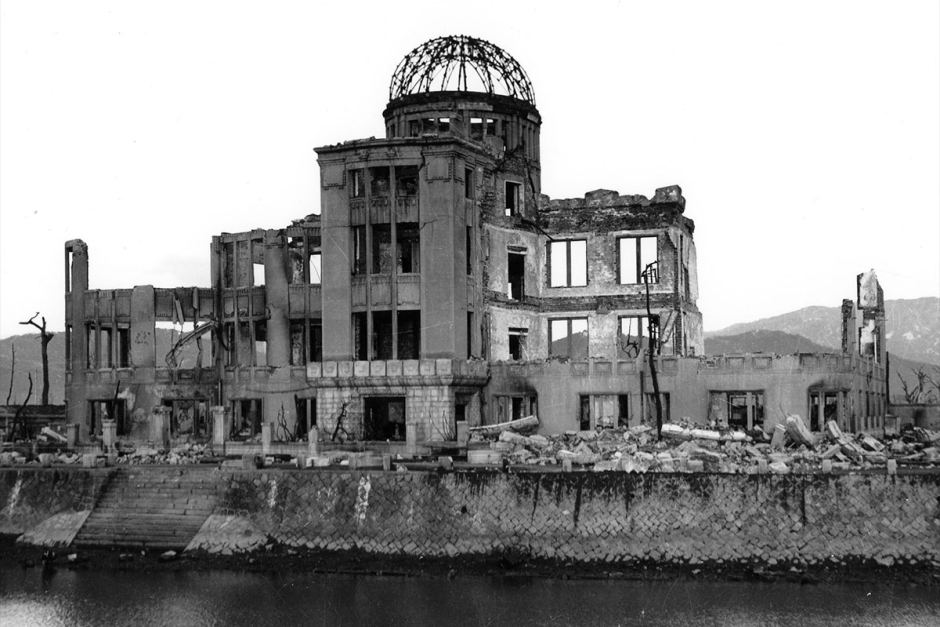National security not incompatible with humanitarian ideals
This month we have commemorated 75 years since the nuclear bombing of Hiroshima and Nagasaki, reflecting on the unfathomable devastation while repeating the familiar ‘never again’ mantra.

The scale of the destruction made it nearly impossible for the International Committee of the Red Cross and the Japanese Red Cross Society to provide aid in the aftermath of those bombs, and the International Red Cross and Red Crescent Movement has made it clear in the decades since that “any nuclear blast would cause insurmountable challenges for humanitarian assistance”. In addition, the catastrophic consequences wrought by the use of two nuclear weapons at the end of World War II demonstrated that such weapons are both disproportionate and indiscriminate and therefore highly unlikely to meet the basic principles of international humanitarian law (IHL). IHL is the set of international laws that dictate what can and cannot be done during an armed conflict. Those laws protect people who are not or who are no longer participating in hostilities and limit the means and methods of warfare.
The existential threat posed by nuclear weapons and the impossibility of mounting a humanitarian response to their use have been the driving force behind the international campaign to ban such weapons. Thanks to incredible efforts by grassroots organisations and networks such as the International Campaign to Abolish Nuclear Weapons and the International Red Cross and Red Crescent Movement, the Treaty on the Prohibition of Nuclear Weapons (TPNW) was adopted in July 2017. The TPNW comprehensively prohibits any kind of development, possession, stationing, testing, transfer, use or threat of use, of nuclear weapons.
At present, 44 states are party to the treaty and another 41 states have signed it; signalling their intention to ratify it. The treaty will come into force 90 days after the 50th ratification.
The adoption of the TPNW is a significant achievement in the fight for a nuclear-free world. Yet progress towards this goal has stalled. While the TPNW will almost certainly enter into force in the not-too-distant future, nuclear arsenals are being expanded and modernised with weapons so powerful as to make those dropped on Hiroshima and Nagasaki look like firecrackers in comparison. The nine states that have nuclear weapons have indicated that they have no intention of joining the TPNW. Even more disappointing is the dismissal of the treaty by the 30-odd states (including Australia) that rely on the so-called ‘nuclear umbrella’ provided by their alliance with a nuclear weapon state. The geopolitics of nuclear deterrence and extended nuclear deterrence have become entrenched over the past 75 years. As a consequence, appeals to the humanitarian imperative for banning nuclear weapons are running up against seemingly intractable claims of national security. Perhaps, therefore, it is time to rethink how anti-nuclear advocacy can better engage with some of the security-focused arguments against joining the TPNW. While the humanitarian rationale for banning nuclear weapons clearly points to a nuclear-free world as the ultimate guarantee of global security, some states nevertheless view security issues as an impediment to the TPNW.
Nuclear umbrella states, for example, argue that they are constrained by the terms of their security alliances. International agreements such as the North Atlantic Treaty and the Australia New Zealand United States security treaty provide the legal basis for the expectation that nuclear weapon states like the US, UK and France will use, or threaten to use, those weapons to protect their allies. It is true that such agreements are, to the extent that they provide for extended nuclear deterrence or support other nuclear activities, incompatible with the TPNW. But this makes it too easy for umbrella countries to use their security treaties as an excuse for why they cannot join the TPNW.
International security arrangements are not set in stone, and can be renegotiated and modified given sufficient political will, legal expertise and diplomatic acumen. Nuclear security arrangements can give way to conventional alliances.
ANZUS, for example, was not originally intended to be a nuclear security arrangement, and there is no mention of the word ‘nuclear’ in any of its provisions. This treaty has, however, been consistently interpreted by successive Australian governments as providing nuclear protection for Australia, with no objection from the US. Arguably, this amounts to ‘subsequent practice’ under the rules of treaty law and has the effect of changing the legal nature of the security alliance to one that encompasses nuclear protection. Given that ANZUS started out as a conventional security alliance, there is no legal reason why it could not be renegotiated or reinterpreted to prevent the use of nuclear weapons. Rethinking nuclear security alliances would not be easy, but it is possible, and is likely the only way that nuclear umbrella states like Australia can become parties to the TPNW without otherwise withdrawing from such alliances.
Why not harness the groundswell of local support for the TPNW to pressure governments into renegotiating the terms of their security treaties? By engaging with the security narrative a little more closely, anti-nuclear advocates might be able to address, and ultimately delegitimise, some of the resistance towards the TPNW and move a little closer to the humanitarian goal of a world free from nuclear weapons.
This article was written by Dr Monique Cormier in her private professional capacity.
Monique is a Lecturer in the School of Law at the University of New England. Monique is also a member of the NSW IHL Advisory Committee at Australian Red Cross.
Charity donations of $2 or more to Australian Red Cross may be tax deductible in Australia. Site protected by Google Invisible reCAPTCHA. © Australian Red Cross 2025. ABN 50 169 561 394
